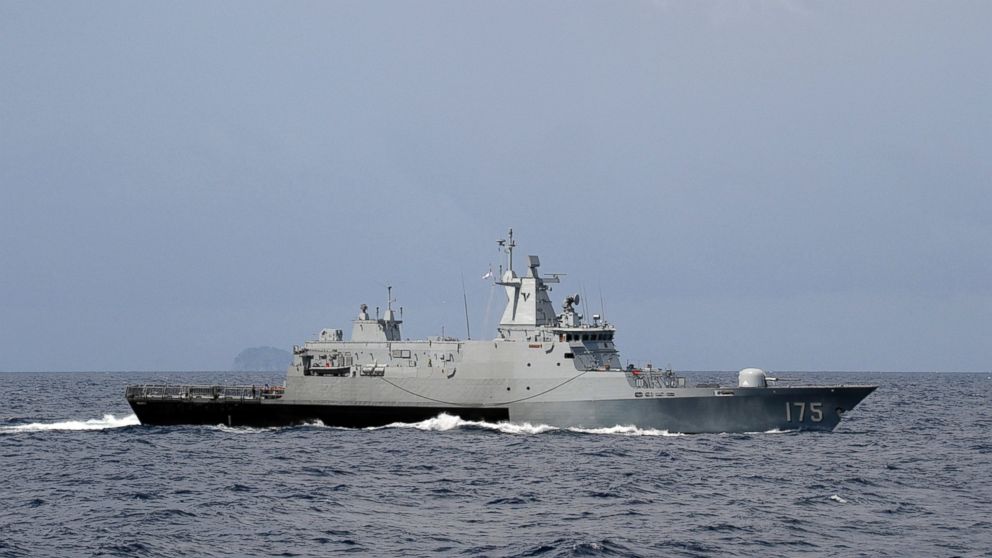Malaysia Plane Search Is Race Against Time as Black Box Ticks Down
March 18, 2014— -- The search for the missing Malaysia Airlines flight MH370 is becoming a race against time as the plane's black box will ping for only a month, and instead of narrowing, the search area has been expanded to mind boggling dimensions.
Already the black box has lost a third of its battery life since the plane vanished and the search area now encompasses 2.24 million square miles -- 10 times the size of Texas -- extending in the north from China and Kazakhstan south to Australia. Authorities hope to find the black boxes in order to understand what went wrong on flight MH370.
Malaysia’s Acting Transport Minister Hishammuddin Hussein said today that the search has faced diplomatic, technical and logistical challenges.
“The search and rescue operations have taken on a new international dimension,” he said. “This is an enormous search area. And it is something that Malaysia cannot possibly search on its own.”
The closest that investigators have come to narrowing the search is a statement by Hishammuddin today that there will be a “special focus on the southern corridor.” That area alone -- a vast expanse that is primarily open water in the Indian Ocean -- is 160,000 square miles.
Frustration is growing over the fruitless search, not only from families of the 239 people on board the plane, but among western officials as well.
Today Thailand's military said that its radar detected a plane heading west that may have been the missing jetliner shortly after flight MH370 stopped broadcasting signals. The unidentified plane was detected about the same time and place that Malaysia's military radar picked up a blip that they suspect was the Malaysia Airlines plane. Thailand told the Associated Press it did not immediately share the information with Malaysia because it wasn't specifically asked for it.
In addition, the Malaysians have contradicted themselves in news conferences on what time or whether they even know when one of the plane's key communications systems was shut down. There has also been conflicting information on when the pilots' homes were searched. Western officials said that the Malaysians have been equally contradictory in private.
Sources had earlier told ABC News that the plane was pre-programmed to turn west, away from its designated flight path to Beijing. It was about that point that the plane lost contact with radar and air traffic controllers. But there seemed to be waffling on that point today when Malaysian Airlines CEO Yahya said, “As far as we are concerned, the aircraft was programmed to fly to Beijing.” He added, however, “Once you are in the aircraft, anything is possible.”
Despite the confusion, the Malaysian authorities remain convinced that the plane was diverted manually and it didn't disappear from radar because of a mechanical catastrophe.
If any evidence of the plane, like debris or an oil slick, is discovered in the water, it will be complicated by the time that it has been missing.
ABC News consultant Tom Haueter, a former National Transportation Safety Board investigator, said crews will have to account for weather and currents when searching for the plane.
“You find floating debris, and then you get with the oceanographers, and they work backwards in terms of time with currents and winds,” Haueter said. “And they predict where the aircraft would have been.”
While Malaysia is still overseeing the overall search, Australian officials are coordinating efforts in the southern Indian Ocean. John Young, the general manager for the Australian Maritime Safety Authority’s Emergency Response Division, compared the situation to looking for a needle in a haystack.
“This search will be difficult. The sheer size of the search area poses a huge challenge,” Young said.
The search is beginning in a smaller, 1,150-square-mile area to the southwest of Perth. Four Royal Australian Air Force Orions, one New Zealand P-3 Orion and a U.S. P-8 Poseidon will search the waters for the Boeing jetliner, which disappeared March 8.
Members of the U.S. National Transportation Safety Board shared research with Australian authorities, Young said, helping officials define the search area.
As Young spoke, he was flanked by maps showing the southern and northern search regions. Those regions were shaped by the plane’s interactions with satellites. The plane continued to ping satellites for up to seven hours, identifying the plane’s location along corridors to the north or south.




